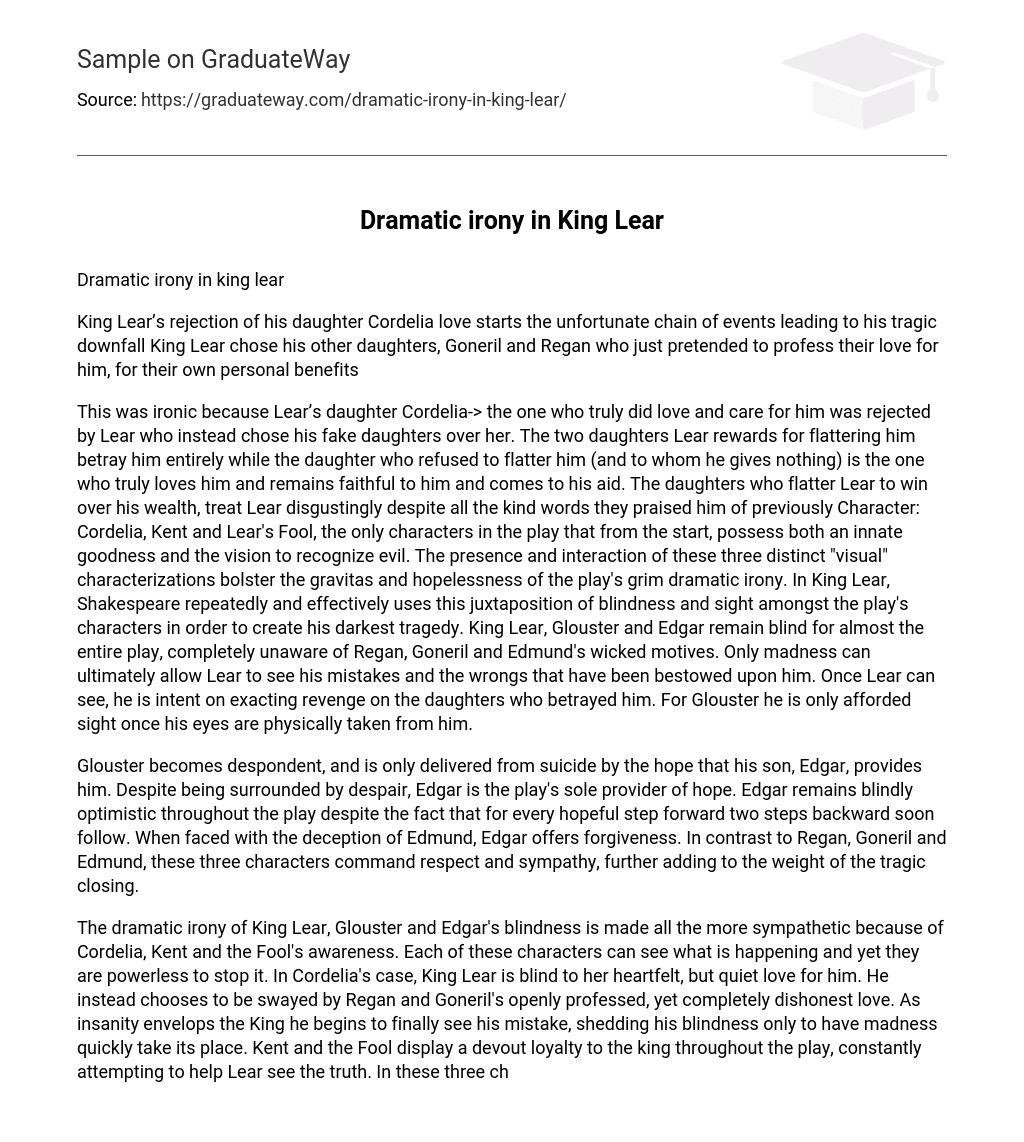King Lear’s rejection of his daughter Cordelia love starts the unfortunate chain of events leading to his tragic downfall King Lear chose his other daughters, Goneril and Regan who just pretended to profess their love for him, for their own personal benefits
This was ironic because Lear’s daughter Cordelia-> the one who truly did love and care for him was rejected by Lear who instead chose his fake daughters over her. The two daughters Lear rewards for flattering him betray him entirely while the daughter who refused to flatter him (and to whom he gives nothing) is the one who truly loves him and remains faithful to him and comes to his aid. The daughters who flatter Lear to win over his wealth, treat Lear disgustingly despite all the kind words they praised him of previously Character: Cordelia, Kent and Lear’s Fool, the only characters in the play that from the start, possess both an innate goodness and the vision to recognize evil. The presence and interaction of these three distinct “visual” characterizations bolster the gravitas and hopelessness of the play’s grim dramatic irony. In King Lear, Shakespeare repeatedly and effectively uses this juxtaposition of blindness and sight amongst the play’s characters in order to create his darkest tragedy. King Lear, Glouster and Edgar remain blind for almost the entire play, completely unaware of Regan, Goneril and Edmund’s wicked motives. Only madness can ultimately allow Lear to see his mistakes and the wrongs that have been bestowed upon him. Once Lear can see, he is intent on exacting revenge on the daughters who betrayed him. For Glouster he is only afforded sight once his eyes are physically taken from him.
Glouster becomes despondent, and is only delivered from suicide by the hope that his son, Edgar, provides him. Despite being surrounded by despair, Edgar is the play’s sole provider of hope. Edgar remains blindly optimistic throughout the play despite the fact that for every hopeful step forward two steps backward soon follow. When faced with the deception of Edmund, Edgar offers forgiveness. In contrast to Regan, Goneril and Edmund, these three characters command respect and sympathy, further adding to the weight of the tragic closing.
The dramatic irony of King Lear, Glouster and Edgar’s blindness is made all the more sympathetic because of Cordelia, Kent and the Fool’s awareness. Each of these characters can see what is happening and yet they are powerless to stop it. In Cordelia’s case, King Lear is blind to her heartfelt, but quiet love for him. He instead chooses to be swayed by Regan and Goneril’s openly professed, yet completely dishonest love. As insanity envelops the King he begins to finally see his mistake, shedding his blindness only to have madness quickly take its place. Kent and the Fool display a devout loyalty to the king throughout the play, constantly attempting to help Lear see the truth. In these three characters Shakespeare has created a dramatic bridge for the audience to identify with, in effect thus drawing the reader closer to each sympathetic character. With each bit of advice ignored or overlooked, sense of urgency arises, until the reader has only a prayer that somehow there is still hope left.





